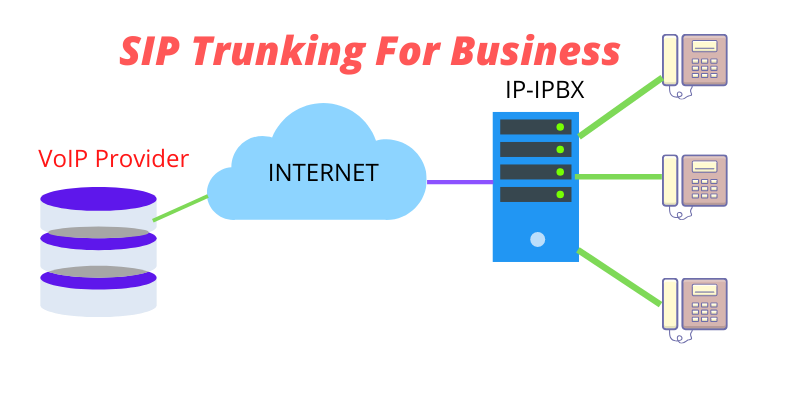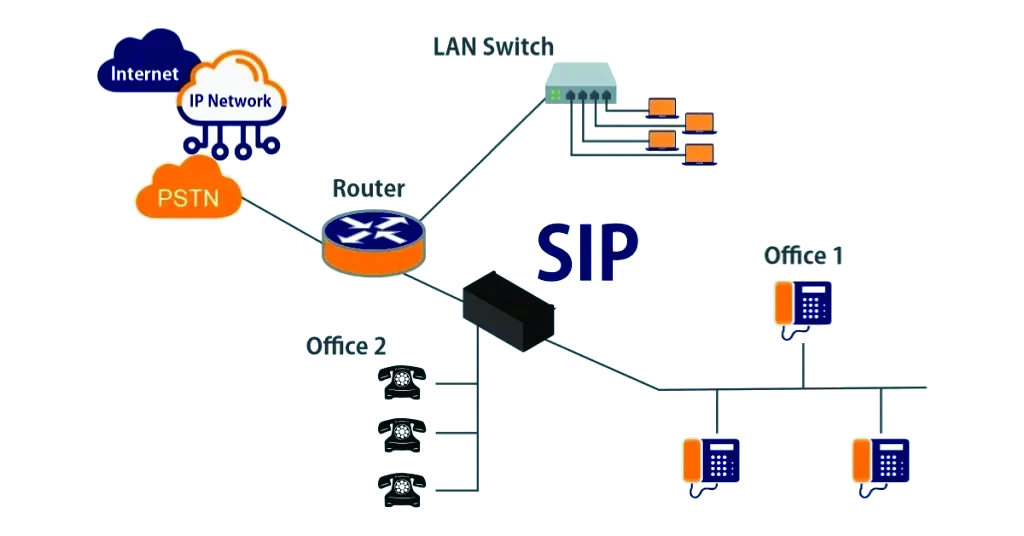Session Initiation Protocol (SIP) trunking has emerged as a cost-effective and flexible solution for business communication. Selecting the right SIP trunk provider is crucial for ensuring seamless connectivity, enhanced voice quality, and reliable communication services. In this blog post, we will explore key considerations and factors to guide businesses in choosing the optimal SIP trunk provider that aligns with their unique communication needs.
Introduction
SIP trunking has revolutionized the way businesses handle their communication infrastructure. It replaces traditional telephone lines with internet-based connections, enabling efficient and scalable voice communication. The choice of a SIP trunk provider plays a pivotal role in the success of this transition. Let’s delve into the essential factors businesses should consider when selecting a SIP trunk provider.
1. Reliability and Network Redundancy
Redundant Infrastructure: A reliable SIP trunk provider should have redundant data centers and infrastructure to ensure uninterrupted service. Redundancy minimizes the risk of service disruptions due to equipment failures or network issues.
Network Quality: Assess the provider’s network quality, including the number of points of presence (PoPs) and their geographical distribution. A provider with a robust and well-distributed network is better equipped to deliver consistent voice quality.
2. Scalability and Flexibility
Scalability: Choose a SIP trunk provider that can scale its services based on your business’s growth. Whether you’re a small business or an enterprise, the provider should accommodate increased call volumes and additional features seamlessly.
Flexible Plans: Look for providers offering flexible plans that align with your specific needs. Avoid rigid contracts that may limit your ability to adjust services according to changing requirements.
3. Quality of Service (QoS) and Voice Quality
QoS Guarantees: Ensure the SIP trunk provider offers Quality of Service guarantees, assuring consistent and high-quality voice calls. QoS mechanisms prioritize voice traffic, minimizing latency and ensuring a smooth communication experience.
Codec Support: Check the codec support provided by the SIP trunk provider. Codecs impact voice quality, and having support for a variety of codecs allows for flexibility in adapting to different network conditions.
4. Security Measures
Encryption Protocols: Security is paramount in business communications. Choose a SIP trunk provider that employs encryption protocols for securing voice data. This ensures that sensitive information remains confidential during transmission.
Firewall and Authentication: Evaluate the provider’s security measures, including firewalls and authentication protocols. A secure SIP trunk is essential for protecting against unauthorized access and potential cyber threats.
5. Geographic Coverage and Local Presence
Global Reach: If your business operates internationally, consider a SIP trunk provider with a global reach. Providers with international points of presence can offer low-latency connections and local telephone numbers in multiple regions.
Local Number Availability: Ensure that the SIP trunk provider can provide local telephone numbers in the regions where your business operates. Having local numbers enhances your business’s accessibility and customer trust.
6. Support and Service Level Agreements (SLAs)
24/7 Support: Round-the-clock support is critical for addressing any issues promptly. Choose a SIP trunk provider that offers 24/7 customer support to ensure assistance is available whenever needed.
SLAs for Reliability: Review the Service Level Agreements (SLAs) provided by the SIP trunk provider. SLAs outline commitments regarding uptime, response times, and resolution processes, providing clarity on the reliability of the service.
7. Cost and Pricing Structure
Transparent Pricing: Select a SIP trunk provider with transparent pricing structures. Avoid providers with hidden fees or complicated pricing models. Understand the costs associated with call rates, channel capacity, and any additional features.
Scalable Pricing: Look for providers with scalable pricing that allows you to pay for what you need. Scalable plans ensure that you can adjust your services based on your business’s evolving communication requirements.
Conclusion
Choosing the right SIP trunk provider is a strategic decision that directly impacts your business’s communication capabilities. By prioritizing factors such as reliability, scalability, voice quality, security, geographic coverage, and customer support, businesses can make informed decisions that align with their unique needs.
The optimal SIP trunk provider goes beyond being a service provider; it becomes a trusted partner in facilitating efficient and effective communication. As businesses continue to leverage SIP trunking for streamlined voice communication, selecting the right provider is a crucial step toward unlocking the full potential of this technology.





